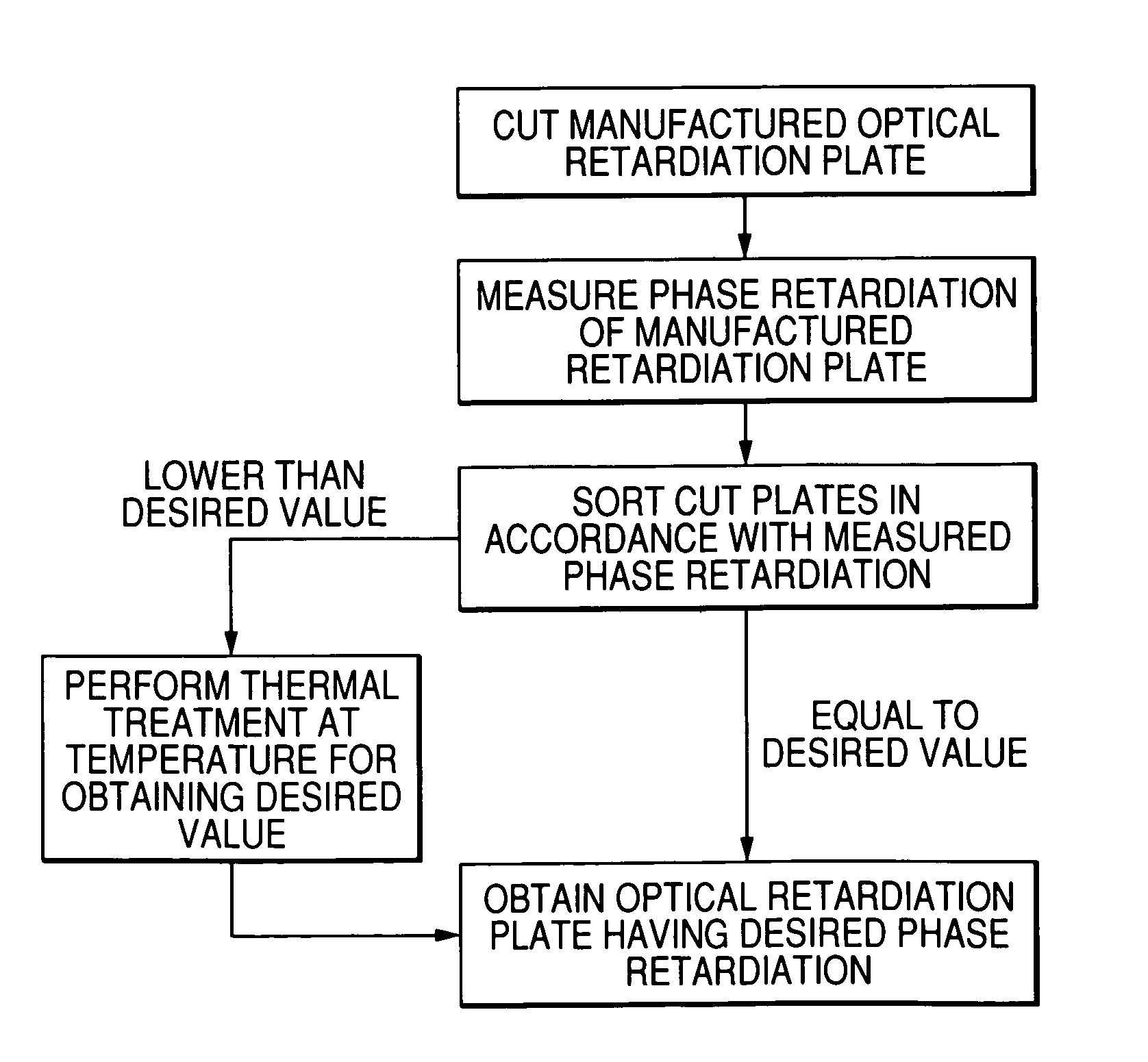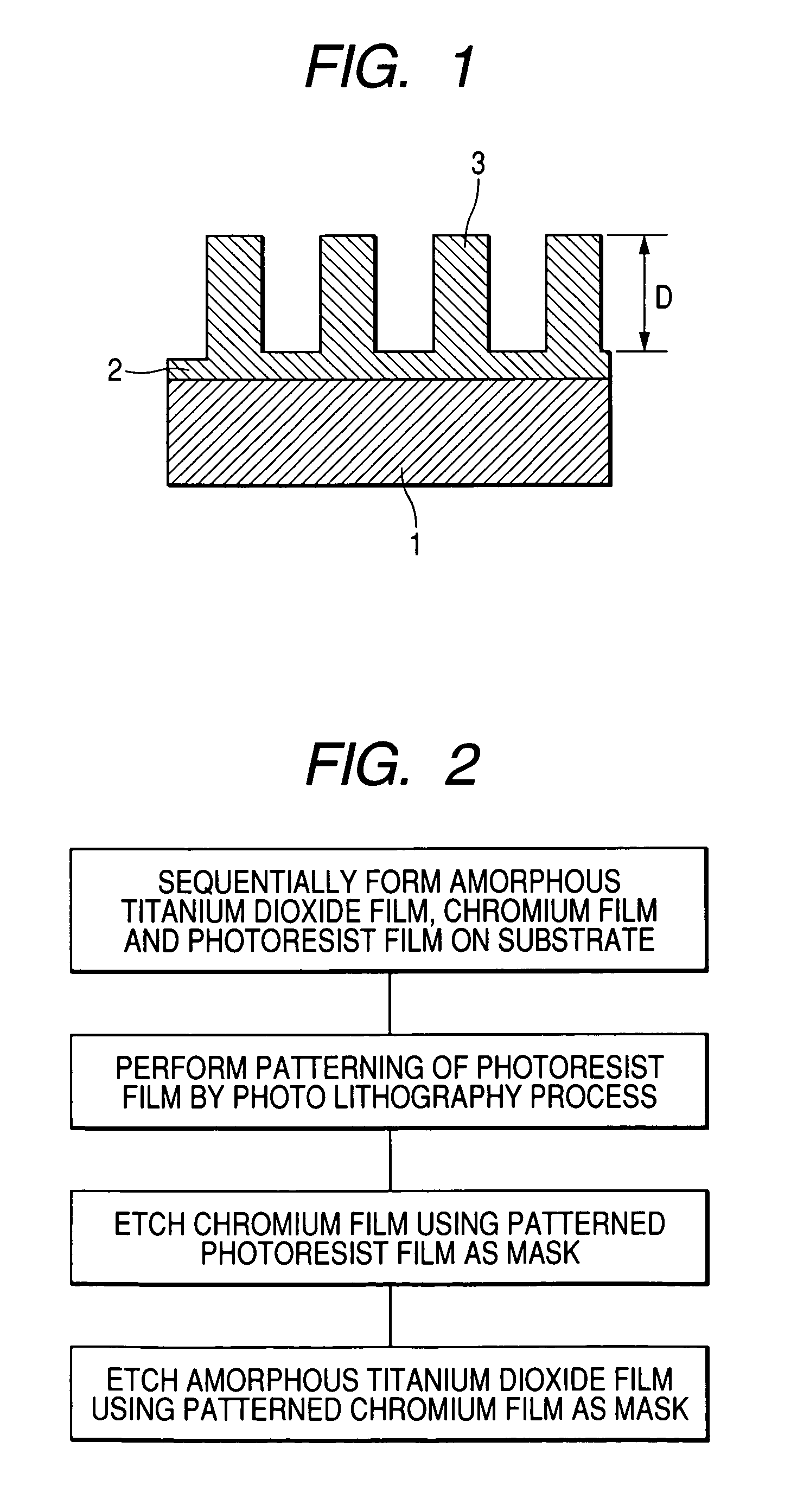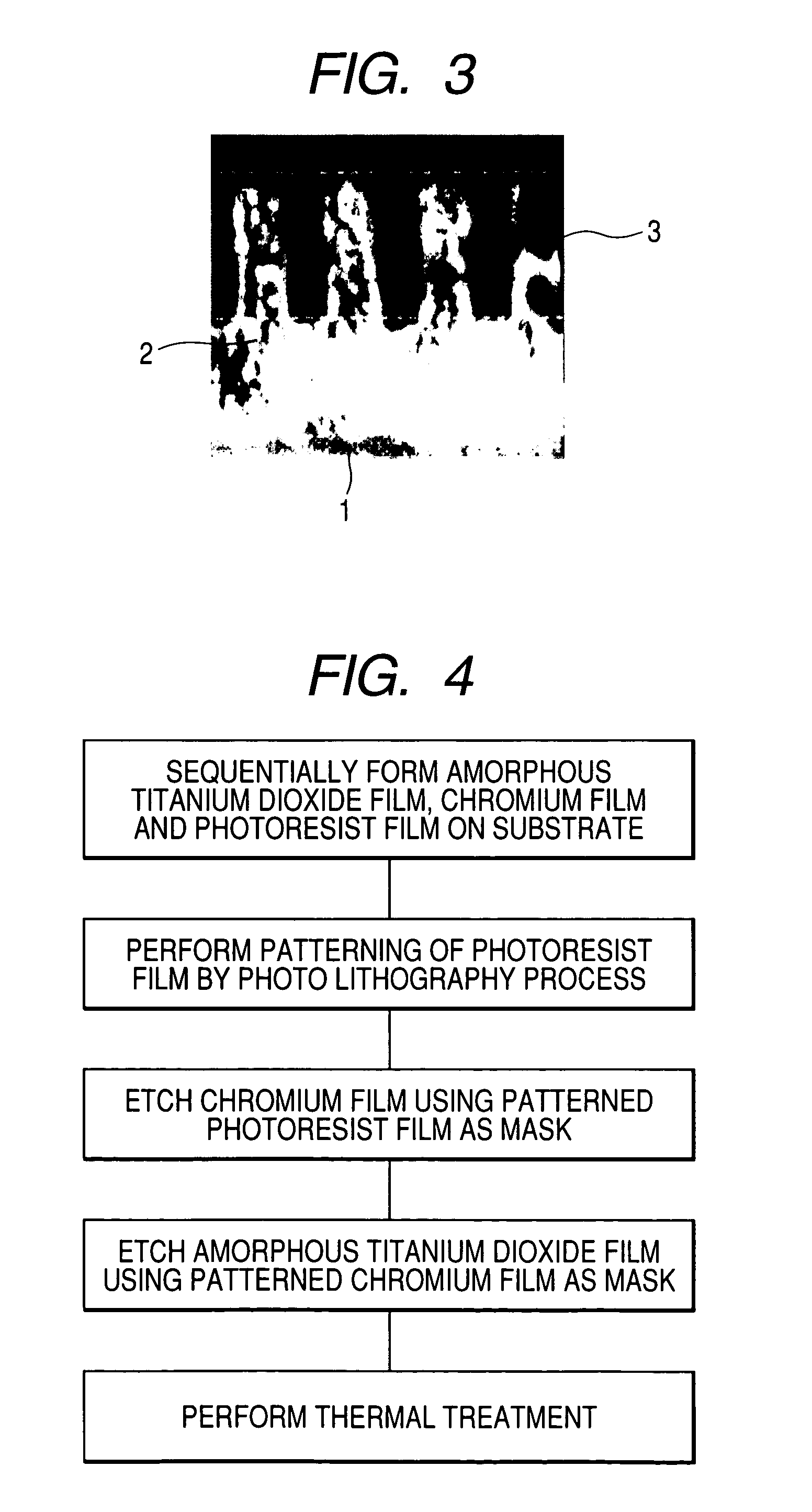Optical retardation plate and method of manufacturing the same
a technology of optical retardation and grating, which is applied in the direction of polarising elements, instruments, transportation and packaging, etc., can solve the problems of difficult formation of photoresist masks, difficult to form gratings having desired shapes, and difficult to transfer gratings, etc., to increase phase retardation, increase refractive index of films, and cheap mass production
- Summary
- Abstract
- Description
- Claims
- Application Information
AI Technical Summary
Benefits of technology
Problems solved by technology
Method used
Image
Examples
first embodiment
[0041]FIG. 1 is a cross sectional view showing a state in which a surface of a dielectric substrate 1 having a refractive index n1 is coated with an amorphous dielectric medium 2 having a refractive index n2 larger than the refractive index n1, and the amorphous dielectric medium 2 is selectively etched away to form a rectangular grating 3. Then, when the refractive index n2 of the amorphous dielectric medium 2 increases through a thermal treatment, a magnitude Δn of structure double refraction increases accordingly. Thus, the magnitude Δn of the structure double refraction is made large without making a depth D of each trench of the rectangular grating 3 large in accordance with Equation (4), thereby increasing a phase retardation ΔΦ.
[0042]FIG. 2 is a process flow chart in Embodiment 1 of the present invention. The amorphous dielectric medium 2 made of titanium dioxide (TiO2) in an amorphous state is formed on the surface of the dielectric substrate 1 made of a quartz wafer, and a ...
second embodiment
[0045]FIG. 4 is a process flow chart in Second Embodiment. In Second Embodiment, a thermal treatment is further carried out for the optical retardation plate manufactured in accordance with the method described in First Embodiment at 700° C. or 800° C. for one hour to form microcrystal particles in the amorphous dielectric medium 2. Thus, the refractive index n2 of the amorphous medium 2 is increased to increase phase retardation in terms of phase retardation characteristics.
[0046]FIG. 5 is a graphical representation in which data on the phase retardations measured after completion of the above-mentioned thermal treatment is plotted against data on wavelengths. The graph shows that the thermal treatment at 700° C. or 800° C. for one hour makes the phase retardation ΔΦ in the optical retardation plate of Second Embodiment larger than that in the optical retardation plate of First Embodiment which is manufactured without carrying out the thermal treatment, and as the temperature durin...
third embodiment
[0050]FIG. 7 shows a process flow chart in Third Embodiment. When the phase retardation of the optical retardation plate manufactured in accordance with the method described in First Embodiment is smaller than the desired phase retardation ΔΦ, the thermal treatment is carried out for this optical retardation plate at a temperature permitting the desired phase retardation ΔΦ to be obtained, thereby allowing the phase retardation ΔΦ to be corrected.
[0051]If the phase retardation ΔΦ of the optical retardation plate right immediately after its manufacture made in accordance with the method described in First Embodiment is 150° when the desired phase retardation ΔΦ of the optical retardation plate is 180° for example, it is necessary to correct a shortage of 30°. When a relationship between the temperature of the thermal treatment and the retardation correction is made clear from the experiments, the thermal treatment corresponding to the correction for the shortage of 30° may be carried...
PUM
| Property | Measurement | Unit |
|---|---|---|
| wavelength | aaaaa | aaaaa |
| refractive index | aaaaa | aaaaa |
| optical retardation | aaaaa | aaaaa |
Abstract
Description
Claims
Application Information
 Login to View More
Login to View More - R&D
- Intellectual Property
- Life Sciences
- Materials
- Tech Scout
- Unparalleled Data Quality
- Higher Quality Content
- 60% Fewer Hallucinations
Browse by: Latest US Patents, China's latest patents, Technical Efficacy Thesaurus, Application Domain, Technology Topic, Popular Technical Reports.
© 2025 PatSnap. All rights reserved.Legal|Privacy policy|Modern Slavery Act Transparency Statement|Sitemap|About US| Contact US: help@patsnap.com



